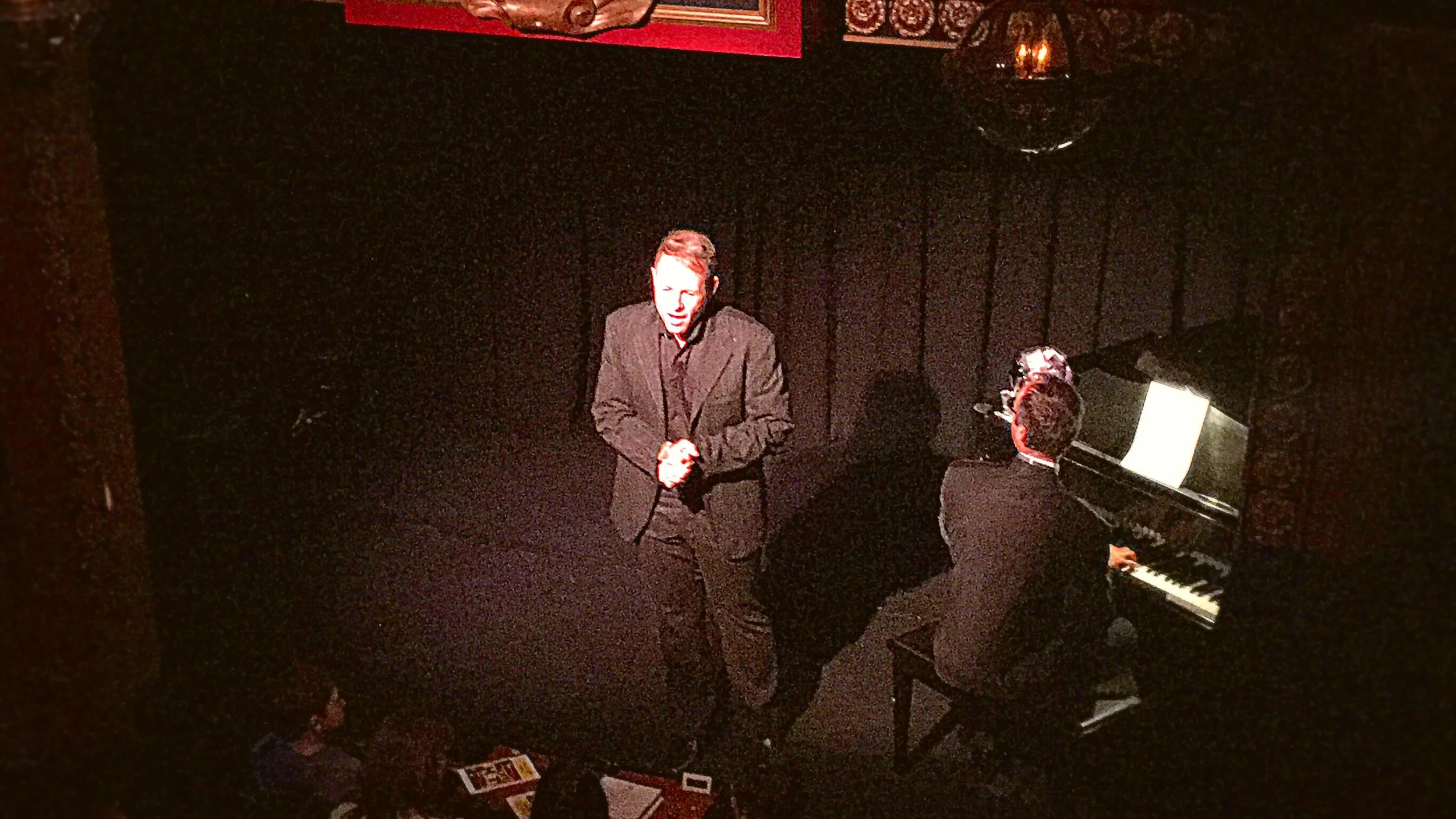by Rob Schiffmann
Note: it may help you to read Parts 1 & 2 of this series. Starting with: Accepting the Music
It is important
that your melody be memorable if only because YOU will have to repeat it after moving through different sections with differing melodic hooks.
Rob Schiffmann
Your First Line, Part 3: Range, Rhythm and Silence
So you have listened to the music that your musician has provided you and you have accepted it without limitation. You are pregnant with emotion and you have let go of all self-judgment. You are ready to accept the sounds that are swirling around in your soul and to let them become audible. You are ready to LET the words come instead of creating or forcing them. Congrats! You are in a great place from which to sing your first line of improvised melody. The question is, of course, what will the shape and contour of that line be?
What WILL be your melody?
An effective melodic initiation - a.k.a. a first line of any section - generally has within it what may be described as a moment or a hook. This serves to make your melody more memorable by making it, in a sense, more visual. For example, if the hook or your melody is a leap, then you can picture it as a skyscraper in a skyline of smaller buildings. By adding this visual element to your melodies, you are able to see it as you create it and thus when it's time to come back to it, you have a visual representation to refer to. It is important that your melody be memorable if only because YOU will have to repeat it after moving through different sections with differing melodic hooks.
Take, for example, the chorus of the song "Falling Slowly" from the musical "Once". The leap on this chorus makes that song a hit. I would posit that the writers earned a Tony, a Grammy and an Oscar simply because of this Major 7th. They have a sustainable career for the rest of their lives because of a Major 7th. Thus is the power of melody.
However, it's not the Major 7th alone that gave them all those awards (and continuing health insurance for the rest of their lives as the rest of us flounder). It is the LACK of leaping around that Major 7th that plays an equally important part in this equation, for in order for something to be considered a moment or a hook, we must have a lack of them surrounding it. To quote Stephen Sondheim, "If life were only moments, then you'd never know you had one." For something to stand out as remarkable, it must be contrasted against the unremarkable. The melody that accompanies the words "Somewhere over the rainbow" is another great example. It starts with a leap and then follows up with small moves.
Creating Contrast with Range, Rhythm, and Silence
If contrast is essential, then what are the various tools we can use to create that contrast. We can use any combination of the following three tools: Range, Rhythm and Silence.
Range
Range refers to a melodic leap, such as a 5th or an octave or - if we are feeling daring - a 10th or beyond! Again, we must surround these leaps with smaller melodic moves in order to let our leap stand out and be impactful. The larger the leap, the more it may stand out. Try improvising a line of melody and inserting a leap. Then repeat the line and expand the width of that leap by going either higher or lower depending on the contour of your initial leap. Note that once you make this leap, your ear will know just what to do to respond to it. What a comforting thought it is in both improvisation and in life to know that when we leap, we are not actually unsupported. We have our ear to help us in music and our hearts and emotions to help us in life.
Rhythm
Rhythm is a fun tool to use for contrast as well. It is all about short notes versus held notes. If you think of this in musical terms, you may start with a combination of syncopated 1/8th or 1/16th notes followed by a nice held whole note. Listen to the verse melody of "Watch What Happens" from Newsies. The held notes at the end of the lines of melody stand out because of the syncopated nature of the previous notes. When you are practicing this type of hook, it's good to use drum language rather than just sing La, La, La. Drum language refers to the language that drummers use when communicating a rhythm to one another. Here is a fun video of people attempting to use this language. Similarly to the width of the leap in the range section being a determining factor of the efficacy of a particular hook, the specificity of the rhythm versus the held nature of a longer note creates a spectrum of efficacy in the use of rhythm.
Silence
Finally, silence is a tool like no other because on the surface is appears to be somewhat unmusical. What is less musical than a LACK of music?!?! Well, the truth is that there is 'silence' and then there is 'no sound.' Silence can be as musical as sound itself if it is used in suspension. When during a moment of melodic silence you can feel the expectation of what is to come AFTER that silence, you will be as engaged as if notes were being played or sung. An important element in using silence as an improviser is that we surprise ourselves with that silence rather than simply insert it at what feels like the end of our phase. Go ahead and slam on the breaks in the middle of a melodic initiation and see what happens to your ear. That stopping short will engage right away and tell you just when you should sing again. A fun trick to try is to say no to your ear in that moment and let it tell you the NEXT re-entry point. The more jagged the silence, the more memorable it will be and if you are willing to listen, the re-entry points are endless. Rather than provide you with an example on this one, your homework is to find a great use of mid-melody silence on your own. Send us a comment with a link to what you find.
So, you have now used three elements to create your melodic initiation. Next time we will discuss how to use these initiations to create an entire verse and eventually, an entire song.
























